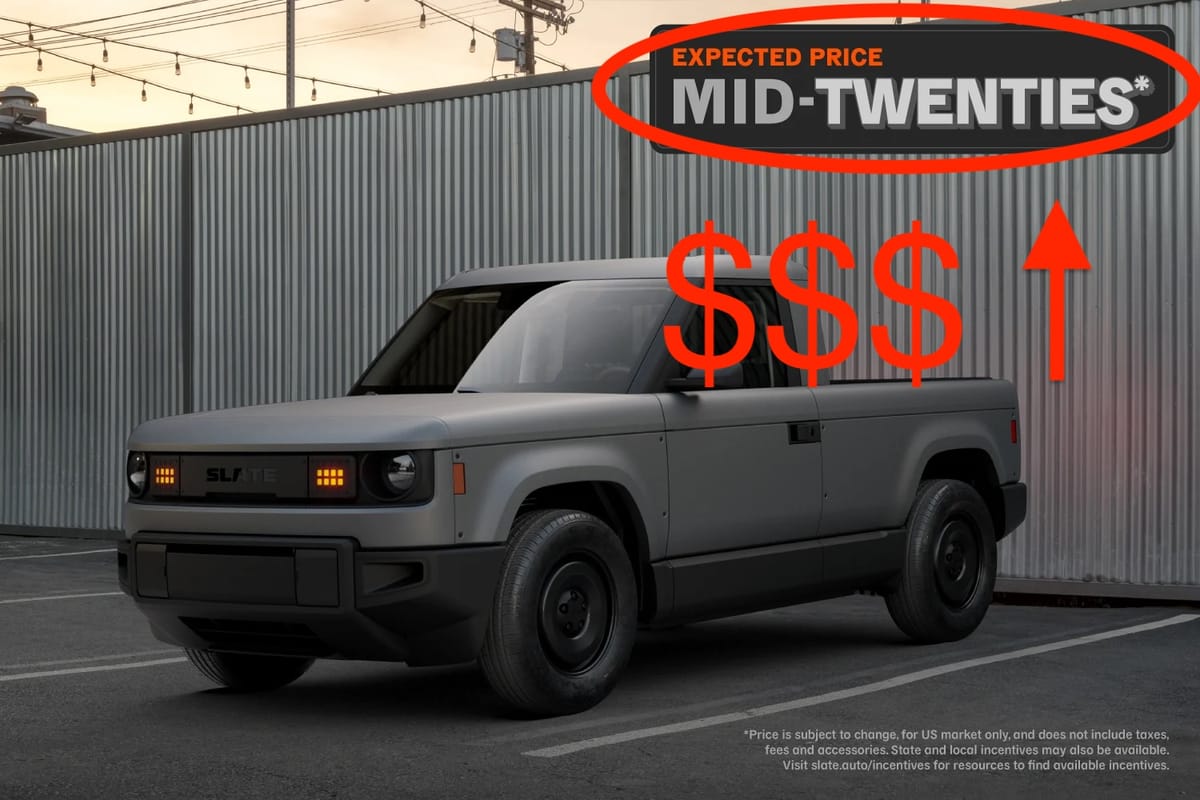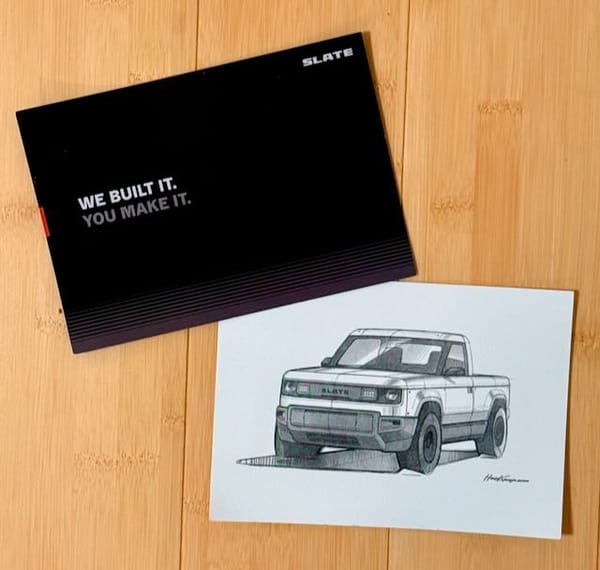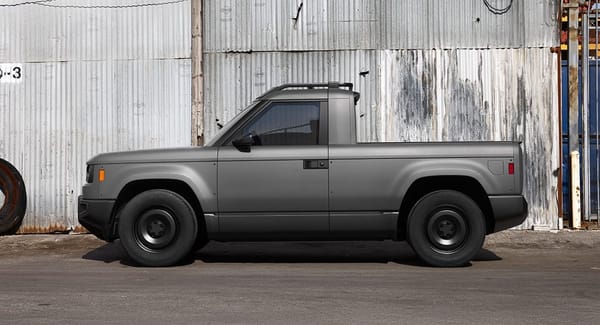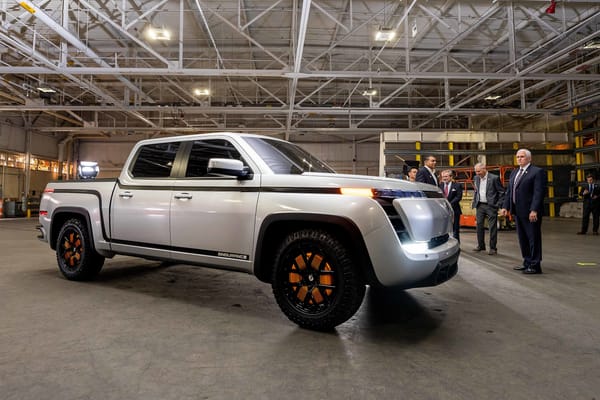The Death of EV Incentives Hits Slate Hard: Truck Price Jumps to Mid-$20,000s

So it happened. In an unsurprising yet hugely unfortunate move for the country and our planet, the federal EV incentives that Slate was counting on to keep its truck priced around $20,000 are gone. By the time the Slate truck hits the market late next year, the $7,500 federal EV tax credit will be history.
Slate has already updated its website to reflect the new reality. The expected price on their home page (pictured above) now reads "mid-twenties" with an asterisk noting: "Price is subject to change, for US market only, and does not include taxes, fees and accessories. State and local incentives may also be available."
A nearly 40% Price Jump Changes Things
The loss of the federal incentive – which had offered up to $7,500 for buyers meeting certain income restrictions and was available to anyone leasing a vehicle – dramatically changes Slate's value proposition. We're looking at nearly a 40% increase from what the company originally pitched as its target price point. With pricing now in the mid-$20,000s, the Slate truck will compete directly with other vehicles in the sub-$30,000 range rather than standing alone as the ultra-affordable option.
State Incentives Can't Fill the Gap - yet
That fine print on Slate's website now links to what appears to be a new incentives page exploring state and local options. But in many states, there's far less on offer than the federal program provided.
Take New York, for example. The New York State Energy Research and Development Authority (NYSERDA) offers a "Drive Clean" rebate of up to $2,000 for buying or leasing specific new EV models. But the rebate amount depends on the vehicle's range.
If you opt for the base model Slate with its projected 150-mile range, you'd only qualify for $1,000 (the rebate for vehicles with 40-199 mile range). But if you spring for the extended range option that gets you over 200 miles, you'd qualify for the full $2,000 rebate. If that extended range battery pack costs around $1,000 extra, the math makes the upgrade a no-brainer for New Yorkers.
Some states have said they may step in to fill the gap left by the federal government. California Gov. Gavin Newsom said he would do so back in November just after Trump's election, but the amount of the state's restored incentive wasn't specified. Californians previously could get up to $7,500 in incentives – like the now-dead federal EV incentive.
Does Slate Still Make Sense?
The bigger question is whether the bare-bones Slate truck still delivers compelling value at the higher price point. At around $25,000 or more, Slate faces real competition from other affordable vehicles, even if they're not electric trucks.
The company's core appeal is its radical affordability for an EV, combined with that DIY customization philosophy. Slate's "blank slate" approach – no paint, crank windows, bring-your-own-tech – makes sense when you're talking about a $20,000 vehicle. At $25,000 or more, buyers might reasonably expect a few more comforts as standard equipment.
That said, Slate's unique positioning as a customizable platform rather than a finished product could still resonate with the right buyers. The question is whether there are enough of them at this price point to make the business model work.
How will the loss of federal EV incentives impact your Slate buying plans? Does this truck still make sense at the higher price point? Share your thoughts in the comments.




